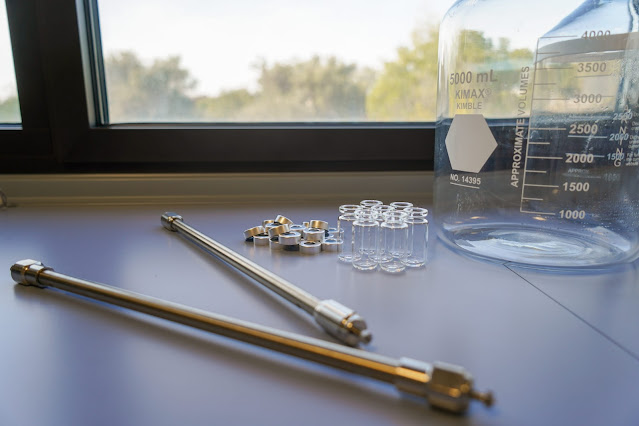 |
| Gel Permeation Chromatography |
Molecules are separated using Gel Permeation Chromatography (GPC) based on how differently sized they are. This method relies on molecules being able to enter the spaces of macroporous support, which is often formed of hydrophilic gels like dextran, agarose, or polyacrylamide. In normal circumstances, molecules with a hydrodynamic diameter less than the size of the support's holes diffuse into the matrix, whereas molecules with higher diameters are rejected and go through more quickly. GPC has isolated a number of egg white and yolk protein proteins.
Gel Permeation Chromatography (GPC) , which separates small molecules food toxicants from big molecular weight substances lipids, waxes, triglycerides, phospholipids, pigments, chlorophylls, carotenoids, etc, can be seen as a highly valuable universal cleaning method. GPC is frequently employed in the analysis of residues of pesticides, particularly to remove fat. Other methods for removing fat, such as sulfuric acid treatment or aluminum oxide column chromatography (as used in PCB and PAH analysis), are less suitable for wide-scope multi-residue analysis, which is common in this field because many pesticides would not be recovered from such a procedure. GPC cleanup's main disadvantage is how time-consuming it is to complete.
A manually performed concentration procedure involving rotary evaporation is typically required before the analysis of the cleansed extract or prior to a further additional clean-up process. Automated systems for offline GPC have been in use since the early 1970s, and typically include an autosampler, a pump, a GPC column, a fraction collector, and a controller. The same column can be used for a very long time in automated GPC because it is a sequential operation. In essence, automated offline GPC cleanup hasn't altered much since its inception. The usage of smaller ID columns results in fewer fractions which may be concentrated more effectively through parallel evaporating of evaluates in the tube on a block of heat under N2 instead of one at a time using a rotary evaporator.
